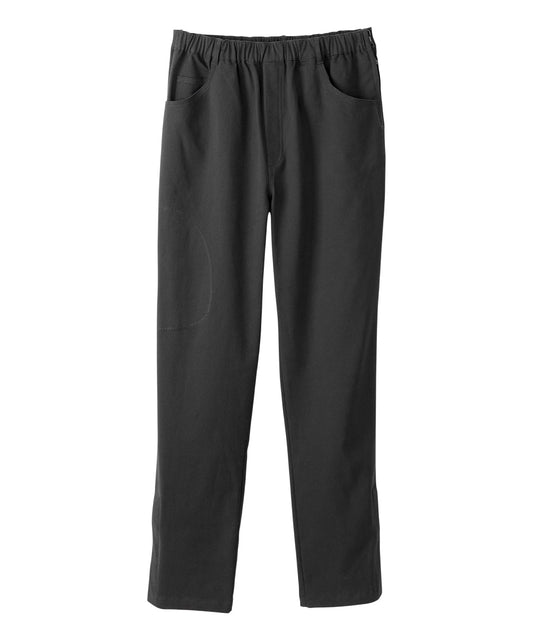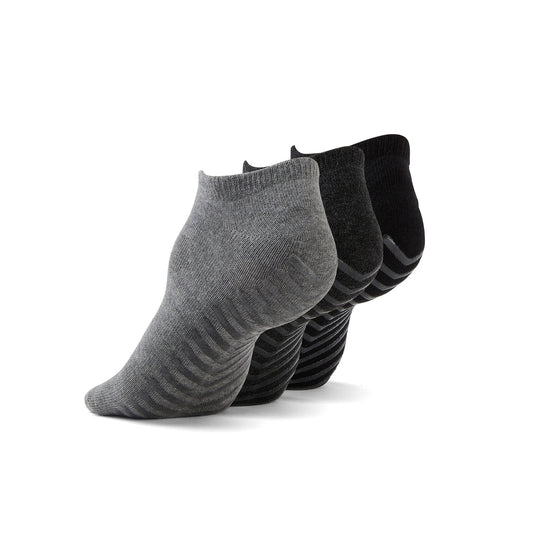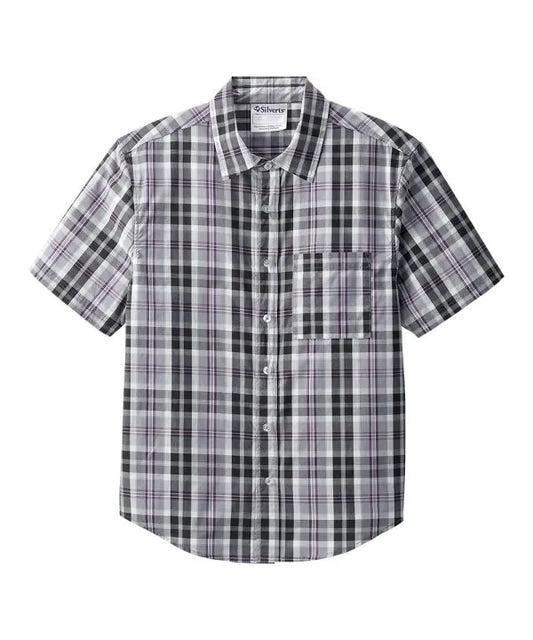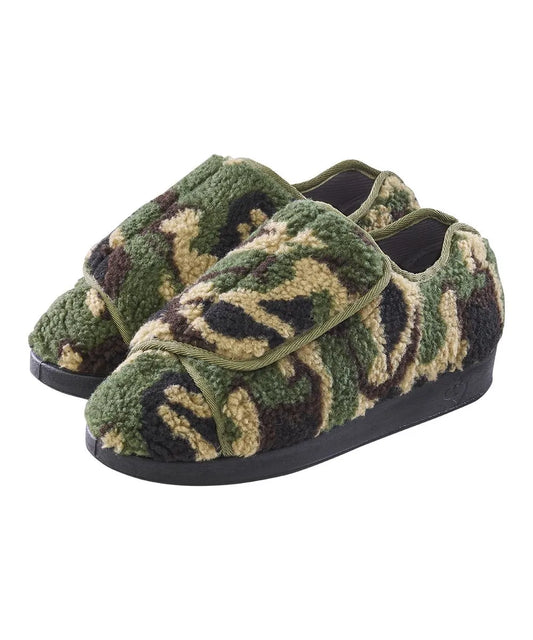Written by: Zuhair Augla
Introduction
Adaptive fashion is all about embracing clothes that make your daily life easier, more comfortable, and reflective of your personal style, whatever physical challenges you may be dealing with. It can also mean having lots of activities and being in many different social situations, so finding adaptive clothes that enable one to transition seamlessly from casual hangouts to formal events, from restful nights to active pursuits, will be important. The aim is to have your wardrobe support your independence, make dressing easier and less stressful, and enable you to be who you are. To achieve this, it helps to understand what to look for when putting together outfits for different situations, whether you’re hanging out with friends, attending special events, preparing for a good night’s sleep, or staying active.
What to look for when deciding on a casual outfit
When deciding on a casual outfit as a young adult, comfort and self-expression often top the list of priorities. The most important thing in adaptive casual wear is that it should feel like a second skin, enabling you to pay attention to your daily activities rather than being involved with hemming and adjusting complicated fasteners. Consider soft, breathable fabrics that let you move easily and maintain your body temperature.
Mens long sleeve shirt with magnetic buttons
This long-sleeved shirt is the perfect blend of adaptive wear and a fashionable causal shirt and it can be found on the JuneAdaptive website. Watch out for clothes with few internal seams, as these may irritate if you have sensitive skin or are on the go a lot. Adaptive casual wear may include magnetic closures, Velcro adjustments, or elastic waistbands that eliminate time and energy spent getting dressed in the morning if one experiences range-of-motion or dexterity challenges. Other important characteristics to consider include functionality. Garments with discrete openings can make assistive devices easier. In contrast, clothing designed for easy layering can help you adjust to changes in temperature as you go from indoors to outdoors or from morning to evening. Finally, when assembling your casual wear, focus on a combination of comfort, style, and adaptability in your clothes so that you feel at ease and confident wherever your day may take you.
What to look for when dressing formally
Formal dressing as a young adult can be both empowering and exciting in an adaptive way. Often, formal events come with expectations to look polished, which can be intimidating at times if the standard clothes or dress don't meet your accessibility needs. The right adaptive formal wear should retain the elegance and sophistication you wish while simplifying the dressing process. Suits, dresses, and separates will be in easy-to-wear fabrics for comfort with designs that will offer adaptive components: hidden side openings, magnetic or zippered fastenings that are easy to work, and adjustable waistlines that can be adjusted for sitting or changes in posture. Formal events also become a way to express one's style in a polished manner. Consider simple silhouettes that flatter your body type and pay attention to details like collars, cuffs, and hemlines that enhance your appearance while remaining functional. Garments made from wrinkle-resistant materials ensure that your outfit stays crisp throughout the event without needing constant ironing. Remember that accessories can be adapted too. There are ties with easy-clip closures, dress shoes with Velcro fastenings, and jewelry with magnetic clasps that enable one to add finishing touches without frustration. Dressing formally in adaptive clothing is about feeling your best without compromising on comfort to enjoy a special occasion in confidence and ease.
What to to look for in terms of sleepwear
Sleepwear is a very often overlooked clothing category, but it is essential for your overall well-being. When choosing adaptive sleepwear as a young adult, consider how your night routine could be made more soothing and less troublesome. The best adaptive sleepwear should promote relaxation and ensure that you get the rest you need. This starts with choosing the right fabrics: soft, breathable materials, such as cotton or bamboo-based blends, that can regulate body temperature, wick away moisture, and feel gentle against the skin. This hospital gown with a backoverlap is perfect to sleep in. It is made with fabrics, making it cozy and won't irritate sensitive areas. It can be found on the JuneAdaptive website linked below. For discomfort with certain textures, target smoother weaves and tagless designs that won't scratch or irritate. Sleepwear designed for ease of getting in and out of can be in the form of elastic waistbands that require less fiddling, nightshirts with minimal fasteners, or pyjamas with accessible openings designed for those who may use medical devices or who require assistance from a caregiver. Adaptive sleepwear might also include design elements like snaps or zippers that provide easy in and out for midnight trips to the bathroom or changes in dressing to minimize disturbances of your rest.
Another point to consider is how well your sleepwear layers. If you get cold, you may want long sleeves or sleep pants that go on and off quickly. If you feel too warm at night, choose short-sleeved tops or nightgowns that allow for good air circulation. Above all, this sleepwear is meant to ensure comfort, safety, and independence in the sleeping process of the person for a better quality of sleep.
What to look for when being physically active
Being active is essential for your health and enjoyment, and as a young adult you may do various forms of exercise; maybe a light workout in the gym, a yoga class, an adaptive sports event, or even just a walk with friends. The first thing to remember in dressing adaptively for physical activity is to wear clothes that work for and with you rather than against you. Look for fabrics made from materials like certain polyester blends, bamboo, and athletic fabrics that are known for their moisture-wicking and breathable properties. These types of fabrics draw sweat away from the skin, promoting dryness and comfort, as well as reducing irritation. Many adaptive sportswear designs incorporate strategic seams designed to reduce chafing and fitted silhouettes to provide support without constraint. Features such as adaptive waistbands, easy-to-fast closures, or strategically placed openings can make it easier to don and doff your workout gear if you have limited mobility or use assistive devices.
Mens cotton pants with elastic waist

This pair of cotton pants with an elastic band is the perfect choice of active pants that check every box, and it can be found on the JuneAdaptive website. Fit is arguably the most critical aspect when it comes to activewear. You are looking for clothes that stay put, don't bunch up, and allow for a full range of motion without needing to readjust constantly. Some adaptive activewear may have compression features that support muscles and circulation, which is helpful if you have stiffness or fatigue. Consider additional needs: If you use braces, orthotics, or prosthetics, find clothing that allows for the comfortable use of such devices. Pants with wide legs or tops with armholes that can be adjusted will help you to move freely and safely. If you're into sports that require helmets or any kind of protection, consider garments that are easy to wear underneath. Above all, adaptive activewear should make you move with confidence, focus on your activity, and enjoy the health benefits of exercise without letting clothing issues get in the way.
Final Thoughts
It may be beneficial to begin with some items that can be mixed and matched, then work your way up to a full wardrobe. For casual wear, select two or three pairs of pants and tops you are familiar with, go on easily, look good, and can be mixed and matched to create numerous combinations of outfits. Add several adaptive accessories that, if needed, assist when putting on/taking off: hats that utilize magnetic fasteners for the attachments or shoes allowing elastic laces to slip their feet in and out simply. Get a number, at least one or two outfits you can depend on for interviews, parties, and celebrations. If these use better quality fabrics, etc., along with well-placed adaptive features, the garments will last longer while allowing you to feel confident no matter where you go. It might help to have multiple sets in rotation for sleepwear, so you’re never scrambling for something comfortable at the end of a long day. Similarly, for physical activities, aim for a small selection of workout clothes that serve different purposes maybe one set for indoor yoga and another for an outdoor run ensuring that you’re always prepared to stay active in a way that feels good.
The minute you are young and grown up, your style and needs will continue to evolve over the years. What felt comfortable and accessible some years back may no longer suit your taste today, and it's perfectly normal. Being open to trying new fabrics, styles, and adaptive features can keep your wardrobe evolving as you do. You may find that a certain material that bothered you before is now great, or that a particular type of closure makes dressing so much quicker and less fatiguing than it used to be. Keeping up to date with the developments in an adaptive fashion, reading blogs, joining online forums, or talking to others who have gone through similar experiences often leads to discovering brands and solutions that you may have yet to consider.
Another key to success is working with a trusted tailor or seamstress. Sometimes, off-the-rack adaptive clothing doesn't fit perfectly, and having a professional make small adjustments can really elevate comfort and the garment's functionality. They can raise or lower hemlines, add hidden closures, or adjust the fit around certain parts of your body to create a truly customized piece of clothing. That extra little effort may pay off when one experiences the difference that well-fitted clothes can make in daily life.
Conclusion
Adaptive dressing is about enabling one to engage fully with the world. The more comfortable, safe, and in control you feel concerning your wardrobe, the better your self-esteem will naturally be. Knowing that you aren't going to have to fiddle with stubborn zippers, that you can quickly don a pair of stylish pants without straining joints, or that your formal outfit will stay flattering and intact through an entire evening out can make all the difference. Adaptive dressing as a young adult is not about compromise but an enriched quality of life and the freedom to present yourself in ways that honour your personality and aspirations.
Your wardrobe represents you and what you represent. To a young adult going through adaptive clothing, it can mean independence, empowerment, and confidence toward facing new challenges. By understanding what to look for in casual outfits, formal attire, sleepwear, and activewear, you can build a collection of clothes that make dressing easier and celebrate your unique style. The aim is not just to make it through the day but to feel genuinely good in what you wear, prepared for whatever life presents, and proud of how you look and feel.
To learn more about dressing adaptively as a young adult then check out the JuneAdaptive website https://www.juneadaptive.com/

















